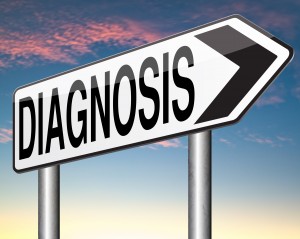7 Missed Injuries In Whiplash!
 Common Missed Diagnosis With A Whiplash Injury!
Common Missed Diagnosis With A Whiplash Injury!
For people who have experienced a whiplash type injury, the common diagnosis provided by the ER or primary doctor is a strain/sprain. They typically tell you to use heat or ice, takes some ibuprofen. You will be stiff and sore for a couple of days, but you will be fine.
Unfortunately, for many people, they are not fine! There is a host of associated symptoms and injuries with a whiplash type injury that go far beyond the muscle and ligament strain/sprain that are typically missed or ignored!
Not recognizing these missed diagnosis is crucial for 2 reasons:
- Treatment and monitoring are not provided! Many of these issues last much longer than the neck pain or stiffness. If they are not recognized, patients can suffer needlessly.
- The real severity and ramifications of the injury are not recognized or documented.
Some of the more commonly missed or ignored symptoms/injuries that can be diagnosed include:
1. Dizziness or vertigo
Post-traumatic vertigo refers to dizziness that follows a neck or head injury. Various research has demonstrated that 20-58% of people suffering a neck injury will develop some type of vertigo.
2. Tinnitus
A 2003 study of 227 cases of neck trauma revealed 55% reported tinnitus within the first 3 months’ post trauma.
By definition it is perception of sound in the absence of any corresponding external sound. Patients typically describe it as a ringing in the ears.
3. Sleep disturbance
Due to pain, emotional trauma, concussion or even mild traumatic brain injury, many patient’s experience sleep difficulties. This lack of a good night’s sleep can compound the affect of the injury, further diminishing their quality of life. Basic outcome assessments such as the Epworth Sleep Scale can aid in documenting the effects of sleep disturbance.
4. Irritability
After an injury, many patients find themselves irritable. Either due to the actual injury or dealing with its ramifications, many find their emotions are in a whirl! A careful case history and documentation is a must.
5. Radiculopathy
Many patients present with arm pain, weakness or different sensations down the arm. In many instances this is due to an irritation of a nerve root. Proper exam to correlate the symptom pattern, dermatome and muscle group is necessary to document the involved spinal level. It is also necessary to determine if an MRI is required.
6. Muscle Spasm
This may seem like and obvious one, yet many times it is overlooked because it is an assumed part of the strain/sprain diagnosis.
A muscle spasm is an involuntary contraction of a muscle that can cause additional pain. When the facet joints of the spine become injured or inflamed, the muscles supporting the spine can spasm.
7. Facet Syndrome
Facets are the small joints that along with the disc, join most of the vertebra together. Their purpose is to control the amount of movement in the spine. The facet joint is surrounded by a highly sensitive capsule which is one of the most common areas injured by the shearing force of an impact. When injured, each facet joint has a common referral pattern that can be noted.
The 7 listed issues are the more common diagnosis that can be overlooked when treating an accident victim. Correct examination is the key! A thorough history, proper testing or Outcome Assessment tools can substantiate these diagnoses, allowing a doc to include them in their notes.
It is our goal to completely diagnose and document the injuries that are present. If you have been involved in a auto accident and are suffering, call us today at (314) 731-4383 to schedule a thorough examination to determine the extent of your injury.
